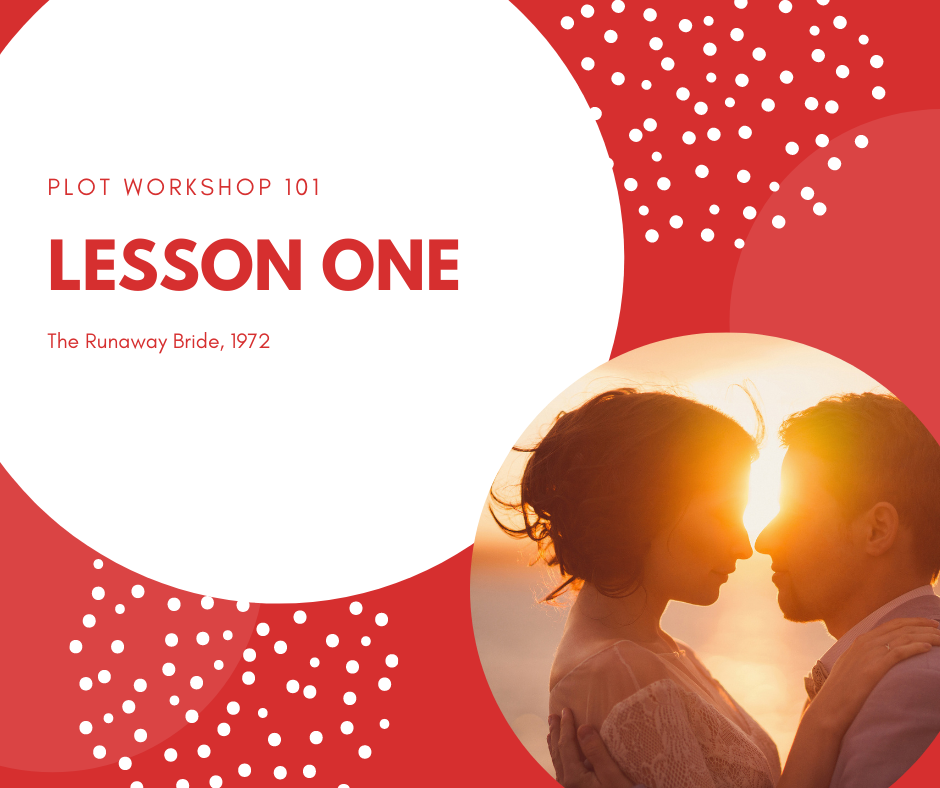
I just finished reading The Runaway Bride by Lucy Gillen, a Harlequin Romance written in 1972, so you wouldn’t have to. The heroine and her love interest are pretty standard 70s fare–a childish woman who doesn’t know what she wants, who suddenly gets cold feet, just weeks before her wedding. She escapes on a train, only to be followed by her fiance, who treats her reckless behavior as a joke.
In the story, she goes on to meet three potential suitors, each in his own way a disappointment–one too worried about appearances, another interested only in enjoying himself in the moment (to hell with the consequences), and a third who is too afraid of angering her fiance to make her his own. Ultimately, she realizes that her fiance was the one for her after all–much to everyone’s relief, including her family who are purportedly marrying her to this son of a partner for “business” purposes, whatever that equates to. This story, while promising in plotting, failed in execution, because neither of the leads deserved a happy ending.
So what can we do to make this better?
Scenario One: Heroine is tired of fighting with her live-in girlfriend, so she joins a dating club that promises to find her the ONE. After three successive PERFECT dates, she realizes she’s better off with the one she’s with. You can make this story even more interesting by having the girlfriend sabotage these dates in a variety of interesting ways. Give each potential PERFECT an interesting flaw that reminds the heroine why the girlfriend is the better option. For example, a PERFECT who loses her shit every time someone fails to do something punctually. Heroine cringes in her seat when her date gives hell to the overworked waitress for failing to bring the appetizer to the table within a quarter of an hour.
Scenario Two: Hero, who’s tired of the endless struggle of meeting the rent with his equally struggling boyfriend, takes off one night, determined to win himself a sugar daddy, thinking this will solve all his problems. Only to learn that all that glitters isn’t gold. You could show him going from one rich man to the next, discovering along the way the downside of the upside. You could have his boyfriend chase after him, or you could just have him come back home, after he’s lost everything, like a prodigal son, to discover whether the love he threw away can yet be saved.
Scenario Three: Small-town teenage girl is adopted by her wealthy uncle, after the death of her parents. Uncle pressures her to give up her small-town boyfriend, introducing her to three potential suitors in the hope that he can happily settle her with one of them. Each is in his own way PERFECT. Why then does she keep thinking of the boy she left behind? To make the story more entertaining, you could have the teenage boy show up at uncle’s house, in the form of a servant, etc., possibly even dressed as a girl, so the two can have some romantic moments–on the sly.
I’m sure you can think of several more story plots using this same structure.
